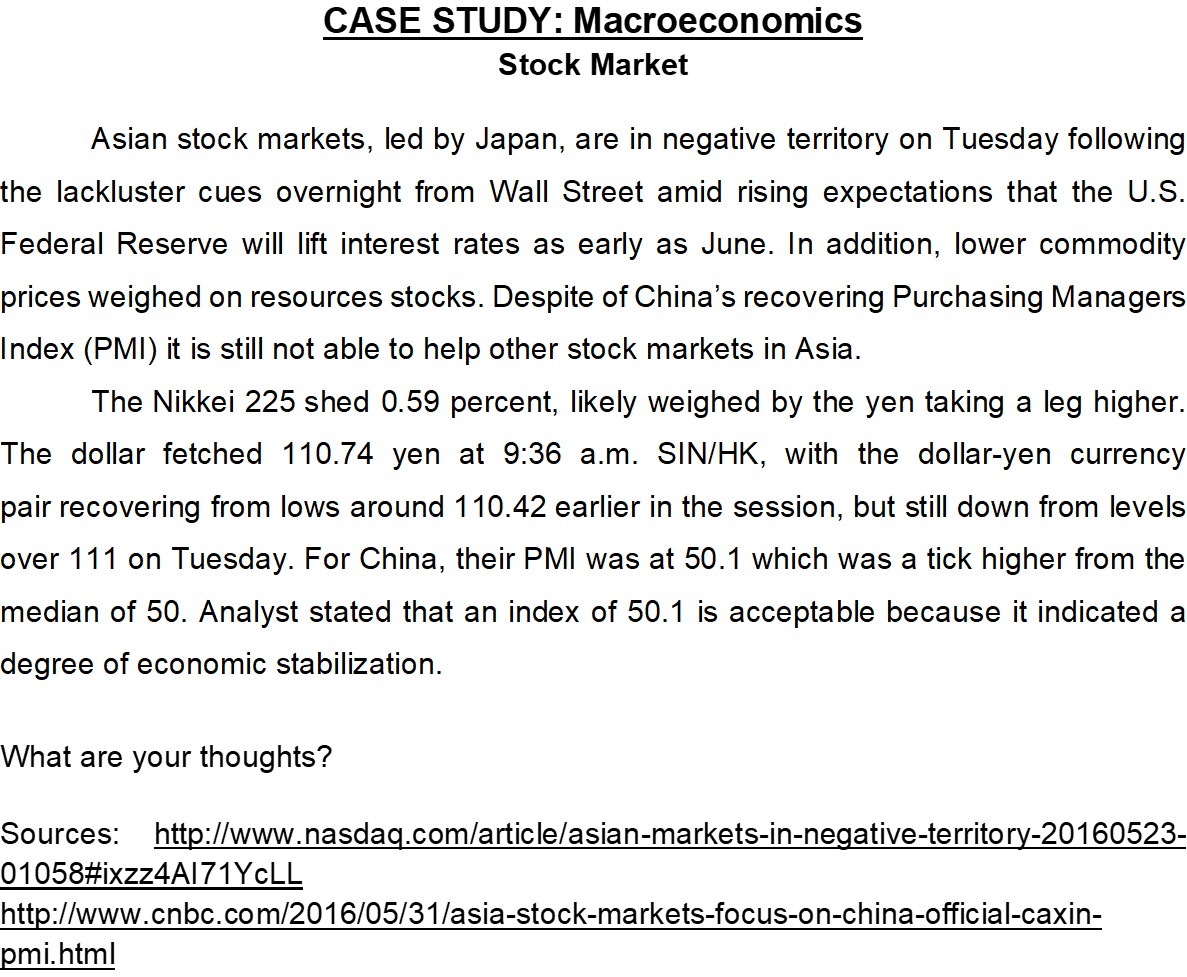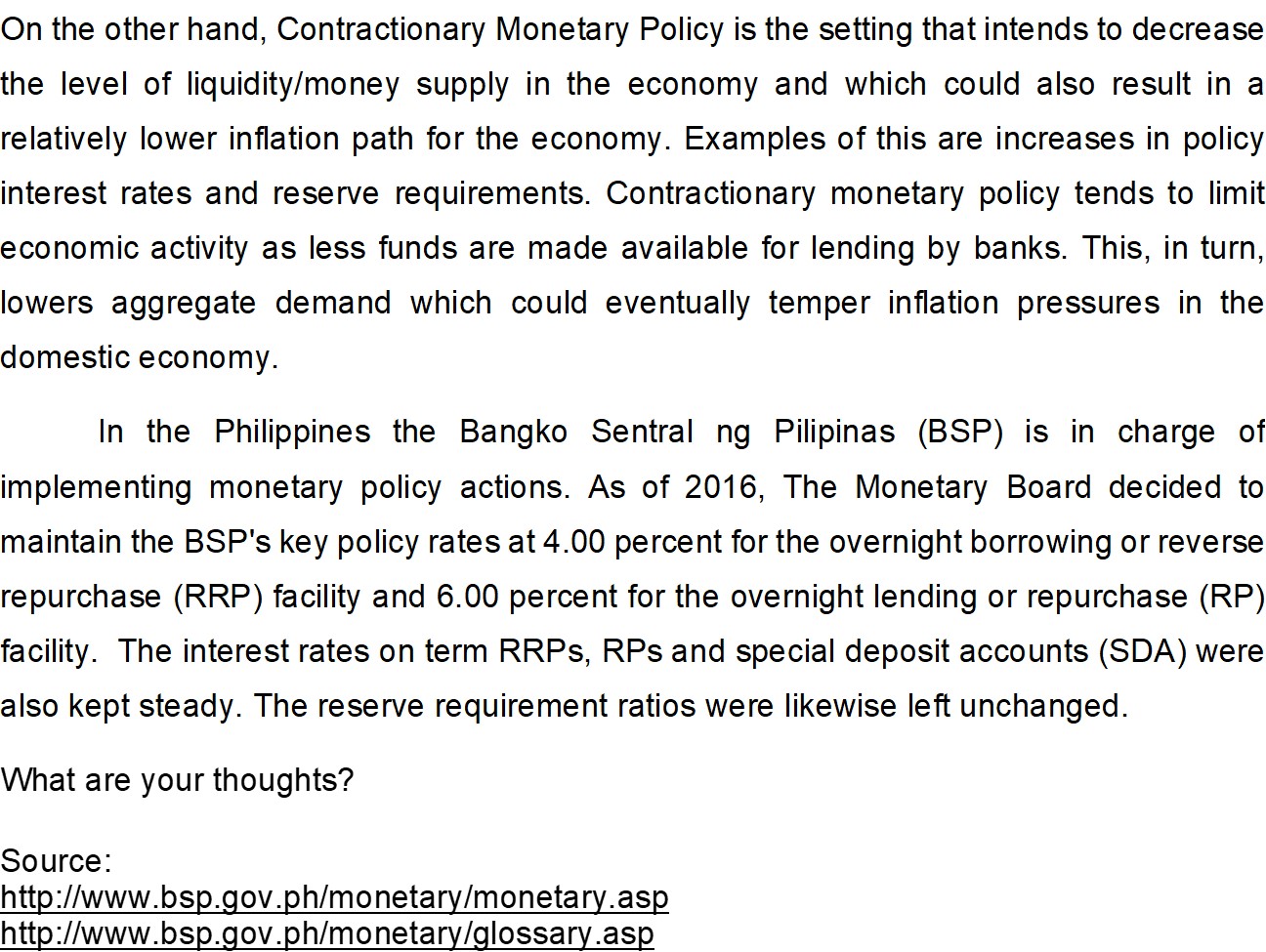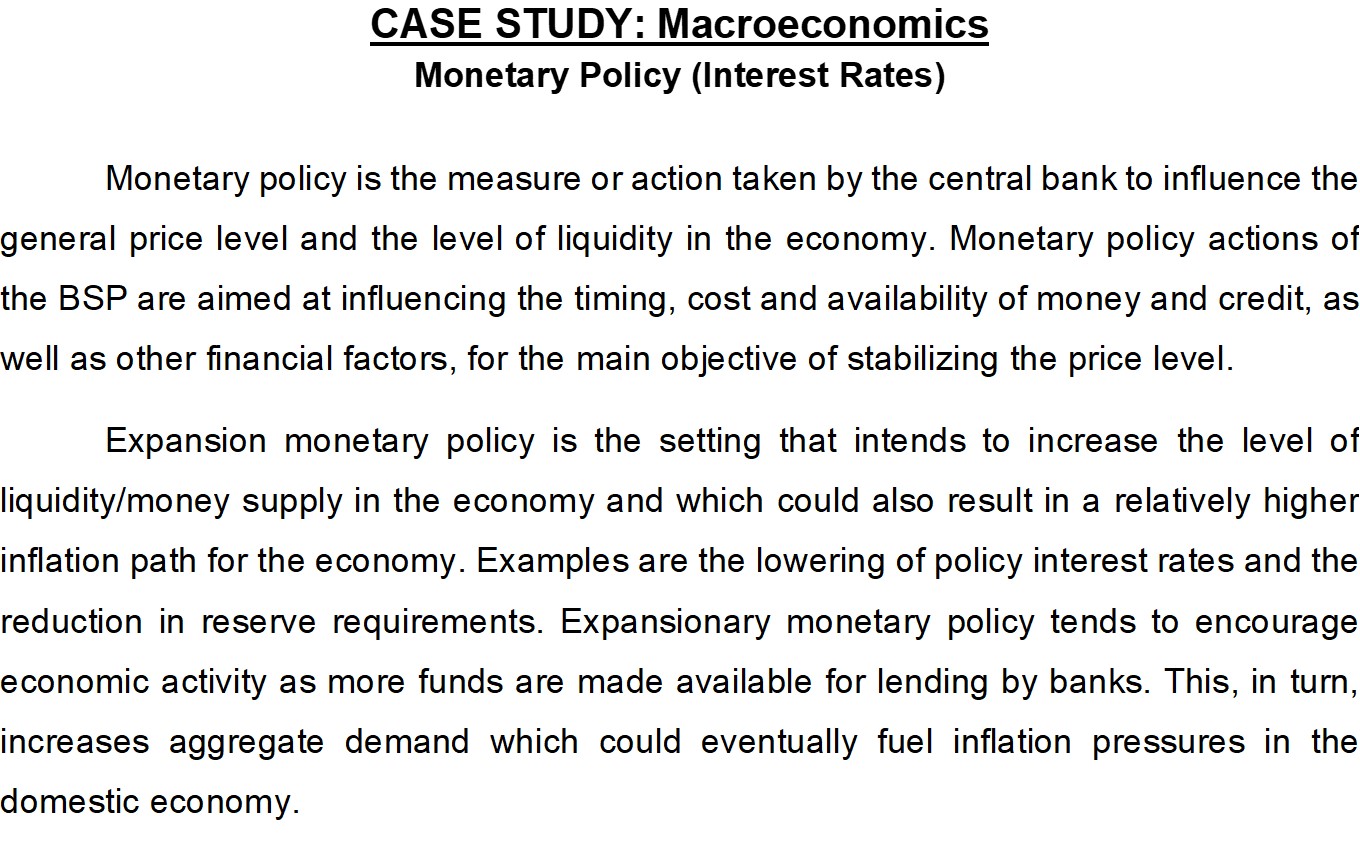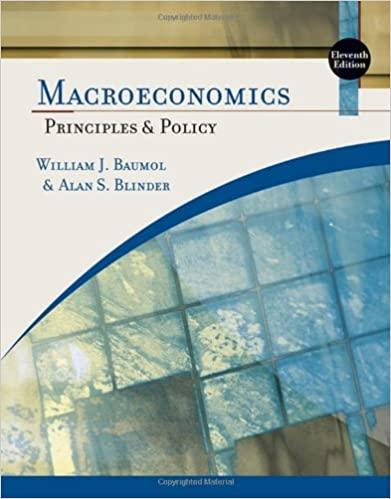Answer the following case study and discuss it briefly the ideas
1.)
CASE STUDY: Macroeconomics Stock Market Asian stock markets, led by Japan, are in negative territory on Tuesday following the lackluster cues overnight from Wall Street amid rising expectations that the U.S. Federal Reserve will lift interest rates as early as June. In addition, lower commodity prices weighed on resources stocks. Despite of China's recovering Purchasing Managers Index (PMI) it is still not able to help other stock markets in Asia. The Nikkei 225 shed 0.59 percent, likely weighed by the yen taking a leg higher. The dollar fetched 110.74 yen at 9:36 a.m. SIN/HK, with the dollar-yen currency pair recovering from lows around 110.42 earlier in the session, but still down from levels over 111 on Tuesday. For China, their PMI was at 50.1 which was a tick higher from the median of 50. Analyst stated that an index of 50.1 is acceptable because it indicated a degree of economic stabilization. What are your thoughts? Sources: http://www.nasdaq.com/article/asian-markets-in-negative-territory-20160523 01058#ixzz4A171YcLL http://www.cnbc.com/2016/05/31/asia-stock-markets-focus-on-china-official-caxin- pmi. htmlOn the other hand, Contractionary Monetary Policy is the setting that intends to decrease the level of liquidity/money supply in the economy and which could also result in a relatively lower inflation path for the economy. Examples of this are increases in policy interest rates and reserve requirements. Contractionary monetary policy tends to limit economic activity as less funds are made available for lending by banks. This, in turn, lowers aggregate demand which could eventually temper inflation pressures in the domestic economy. In the Philippines the Bangko Sentral ng Pilipinas (BSP) is in charge of implementing monetary policy actions. As of 2016, The Monetary Board decided to maintain the BSP's key policy rates at 4.00 percent for the overnight borrowing or reverse repurchase (RRP) facility and 6.00 percent for the overnight lending or repurchase (RP) facility. The interest rates on term RRPS, RPs and special deposit accounts (SDA) were also kept steady. The reserve requirement ratios were likewise left unchanged. What are your thoughts? Source: http://www.bsp.gov.ph/monetary/monetary.asp http://www.bsp.gov.ph/monetary/glossary.aspCASE STUDY: Macroeconomics Monetary Policy (Interest Rates) Monetary policy is the measure or action taken by the central bank to influence the general price level and the level of liquidity in the economy. Monetary policy actions of the BSP are aimed at influencing the timing, cost and availability of money and credit, as well as other financial factors, for the main objective of stabilizing the price level. Expansion monetary policy is the setting that intends to increase the level of liquidity/money supply in the economy and which could also result in a relatively higher inflation path for the economy. Examples are the lowering of policy interest rates and the reduction in reserve requirements. Expansionary monetary policy tends to encourage economic activity as more funds are made available for lending by banks. This, in turn, increases aggregate demand which could eventually fuel inflation pressures in the domestic economy









